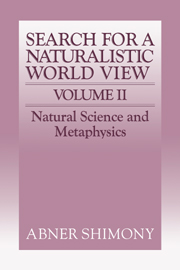Summary
INTRODUCTION
In Chapter VI (“Time”) of Paul Weiss's first book, Reality, there are many incisive phenomenological reports concerning time, among them the following:
To specify the ordered moments of time as being past, present, and future is not to characterize time, but the picture of it, a time still undifferentiable from an eternal, unchanging structure. Passage is part of its essence.
Suppose that the series 1, 2, 3 represents the moments of time, and that 1 is past, while 2 is present and 3 is future. There will be no time unless when 3 becomes present, 2 becomes past. Being present cannot then be an irrevocable, intrinsic character of these moments, for then they would all be present together.
Weiss never revoked these early philosophical comments, but he did elaborate them. For instance, in First Considerations one finds the following:
That time is more than a line is also evident from the fact that it is lived through. A line has all its distinguishable parts co-present, but the “line of time” is constantly being drawn and just as constantly erased.
The present paper is essentially an exploration of the ideas expressed in these three passages. I agree with them at the commencement of my analysis and continue to agree with them when the analysis is completed. However, my mode of analysis – which combines considerations from phenomenology, analytic philosophy, and natural science – is quite different from Weiss's, and I shall proceed without further reference to his texts.
- Type
- Chapter
- Information
- The Search for a Naturalistic World View , pp. 271 - 288Publisher: Cambridge University PressPrint publication year: 1993
- 5
- Cited by



